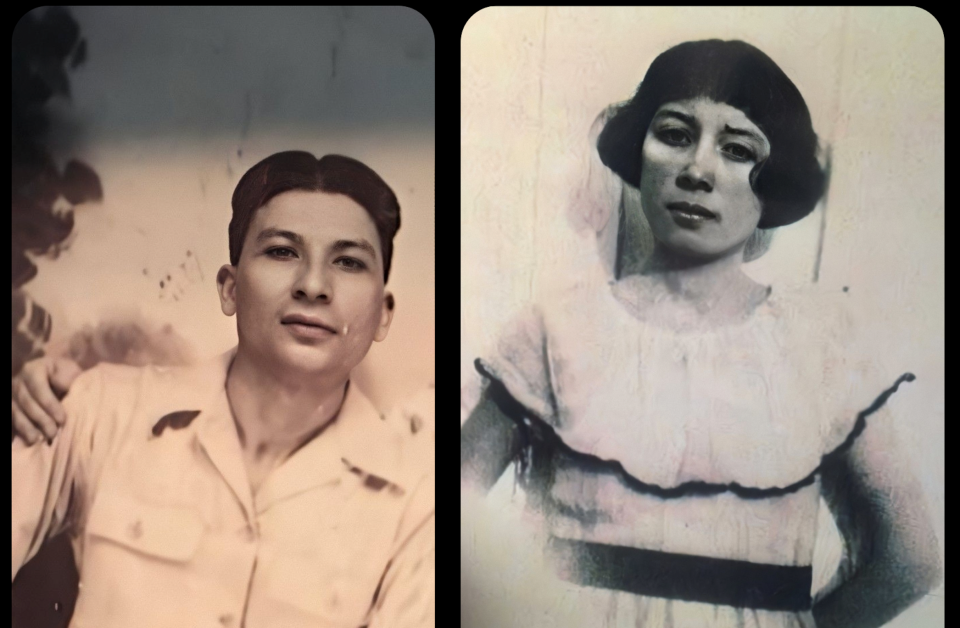My great-grandmother hid her race. Two decades later I understand why.
I'm one of those New Yorkers living in Nashville, but perhaps you will forgive me because my family has deep roots in Natchitoches Parish, Louisiana.
Incredibly, my connection to New York began in Louisiana.
In the 1930s, my great-grandmother Lola Perot married Irish New Yorker John Donnelly in her Louisiana hometown. They moved to New York after getting married. The adjustment from South to North must have been massive for Lola – not only did she leave behind her family and her culture, but I later learned she also left her name and her race.
My mom was raised French and Irish
My mom and her mother, Marion (Lola’s daughter), were raised as French and Irish by Lola (in New York she went by “Louise”). My grammy was very proud of her French heritage.
One day, after going through some boxes of old family photos, I saw a picture of my mom’s grandmother on her wedding day, standing next to my Irish great-grandfather. It was completely obvious that Lola was not white.

Family truths: Thank you, Prince Harry, for having the courage to speak your truth
My dad, Stuart Scott, died of cancer: But he beat it by how he lived
Two decades later, I am still grappling with the meaning of that photo, and everything it represented about who my family was, and still is. Throughout the course of my great-grandmother’s life, she and her family were censused as Black, Mulatto, Mexican (Latino) and eventually white. It shook me to the bottom of my perhaps not-so-French core.
Who was Lola Perot? And who am I?
In all transparency, I harbored frustration at Gram for hiding our heritage. The amount of work required to simply find out who I am piled up around me.
Determined to solve the mystery, I spent this past year interviewing family members in New York and meeting new family members in Louisiana – clawing at the stories in the most frantic way. I was exhausted, and unsure of how to continue of this journey not only finding my roots but also explaining them.
Our real U.S. history: Pam's experience at my 1960s white school is the history we need to teach. Not ignore.
Congress can help right the wrong: My Black grandfather was tricked out of our family farm
A woman named Naomi Drake change my perspective.
From the same era as Lola, Drake headed the Bureau of Vital Statistics in New Orleans, from 1949-65. It was her personal mission to “out” any people whose birth certificates said white but she believed to have African or colored ancestry.
In her view, this racial hypodescent classification was necessary, and she would often investigate an individual’s family tree, intent on finding one ancestor labeled as “Colored,” or scour obituaries of relatives, looking to see if any family member had a service at a traditional “Black” funeral home.
If someone rejected Drake’s racial determination, she would withhold the birth certificate entirely.
Opinion alerts: Get columns from your favorite columnists + expert analysis on top issues, delivered straight to your device through the USA TODAY app. Don't have the app? Download it for free from your app store.
Our most dangerous enemy in the Jim Crow era: heritage
Trying to survive in the the Jim Crow era was incredibly difficult for non-white folks.
In Louisiana, the “one drop rule” was not overturned until 1983 – a year after Lola passed away and only three years before I was born. Under that rule, one only had to be 1/32 African American to be considered colored. I was raised white, but if I had been just a few years older, Louisiana would have said otherwise.

I used to think Lola was ashamed of where she came from, but now I know better.
What looked to me like self-destruction was her attempt to protect her family and her children from the most dangerous enemy: their own heritage. Her decision for our family was both brave and heartbreaking. We were both the privileged and the discriminated. We were both white and colored. We were both Yankee and Southern.
Our family history seemed to be a little bit of everything – and maybe being a little bit of both of something is OK.
Danielle Romero loves uncovering secrets and telling stories long since forgotten.
You can read diverse opinions from our Board of Contributors and other writers on the Opinion front page, on Twitter @usatodayopinion and in our daily Opinion newsletter. To respond to a column, submit a comment to letters@usatoday.com.
This article originally appeared on Nashville Tennessean: Surviving the Jim Crow South meant hiding her race. Now I know why.

